If you're looking for project management software, Trello and monday.com are two popular options. Choosing the "right" software, though, has as much to do with your business's needs as the software itself.
You'd do well with either one: The Ascent determined that Trello is the easiest to use, but monday.com is top rated for its advanced functionality. We'll go over both of them below so you can choose the best one for your small business.
Trello vs. monday.com: An overview
Trello and monday.com have a significant degree of overlap as project management tools. The following comparison will highlight where each one shines or falls short with its features, reporting and analytics, customer support, ease of use, pricing, and integration with other software.
Who is Trello for?
Trello is a kanban project management system suitable for marketing projects, customer support tracking, sales pipelines, and HR tracking. It offers a free plan for personal use that comes with powerful core features, and its upper-tier plans are used by companies including Adobe, Foot Locker, and Spotify.
Trello does have limitations: It does not offer built-in customer invoicing, so it's more appropriate for in-house projects. Complex, large-scale projects such as software development are also not its forte because it lacks native budgeting tools and advanced reporting features.
If you need this level of functionality, consider some Trello alternatives.
Who is monday.com for?
monday.com can organize projects using kanban, but it also offers other project schemas. Its advanced functionality outstrips Trello's, but monday.com remains easy to use. Companies using monday.com include adidas, HubSpot, and Lonely Planet.
monday.com is not designed for individual users or personal projects and has no "forever free" plan. Businesses will find that its lower-level plans have limited features, reduced file storage space, and restricted activity logs.
If you do need its expansive functionality, monday project management could be the right choice, even though you'll pay more for it.
Trello vs. monday.com: Features
Trello's stripped-down approach contrasts with monday.com's advanced functionality. You might want the ability to do everything all the time, but determining what you do and don't need can save you money.
What Trello offers
Trello project management is built around simple, visually appealing kanban boards with vertical task and/or status lists. You move project cards left to right from one column to another as sequential tasks are completed.
The board in the screenshot below has a five-step content production process: planning, assigned, writing, editing, revising, and finished. Each content topic, such as "Trello Review Article," has its own card, which is dragged and dropped to the next vertical task list upon completion.
You can assign tasks to different team members when moving cards to another column.
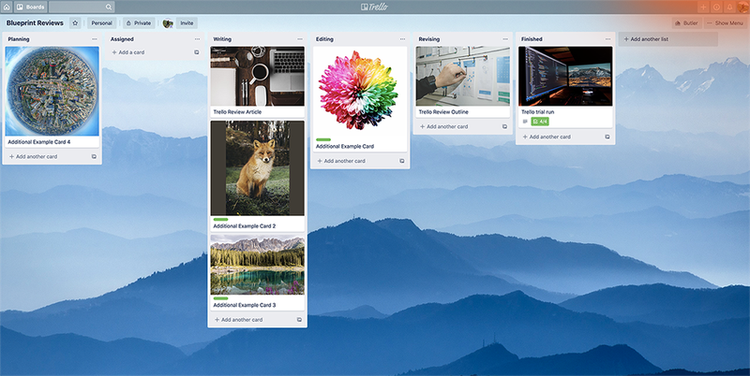
The majority of Trello's functionality is in its kanban boards. Image source: Author
What you see is what you get, because almost everything you do in Trello uses its kanban boards and project cards. Additional features that flesh out its capabilities include:
- Scheduling: Prioritize tasks with due dates on cards, and apply custom labels.
- Collaboration: Write or respond to comments, and tag Trello users in them at the bottom of each card.
- Attachments: Attach files and photos to cards, or link to files in other storage services such as Dropbox, Google Drive, and OneDrive.
- Mobile app: Manage your Trello boards on the go with its free iOS and Android apps for digital devices.
Trello's reporting and analytics abilities are almost nonexistent. Its Butler feature can gather information from cards, such as tasks completed during a week, to export into a spreadsheet, but that's about it.
For more complex projects where reporting is a key component, you'll need a Trello "power-up," a third-party app or integration, to increase functionality.
What monday.com offers
monday.com can display projects using kanban organization, but it also has additional project roadmap templates. Set up or switch projects between kanban, calendar, chart, timeline, and map views. While Trello team members primarily use shared boards, monday.com can create private dashboards.
In the example below, multiple content production projects are shown at once in an easy-to-read grid format not available in Trello.

The grid view is one of monday.com's multiple project organization templates. Image source: Author
monday task management uses a list system on boards called "pulses." Pulses are organized in columns to track a project's progress. Additional features include:
- Shared team calendar: See which tasks are due in the coming weeks or months across all project boards with the team calendar view.
- Resource management: Create custom boards using the pulse system to track project resources.
- Time tracking: Add a time-tracking column to your project schedule in the Pro and Enterprise plans.
- Mobile apps: monday.com also offers fully functional iOS and Android apps for digital devices.
monday.com has multiple widgets for your personal dashboard, including a simple to-do list, a quote of the day, and a "battery" that shows the status of all your projects, as in the screenshot below.
Each project is color coded to show completed tasks (green), orange (in progress), blue (upcoming), and red (stuck).

Use the battery widget on your personal monday.com dashboard to check progress across all of your projects. Image source: Author
monday.com's reporting and analytics also exceed anything Trello can offer on its own. Similar to the battery app above, one click pulls up a project's key performance indicators (KPIs): budget, overall progress, and color-coded tasks to show which ones are in progress, upcoming, completed, or stuck.
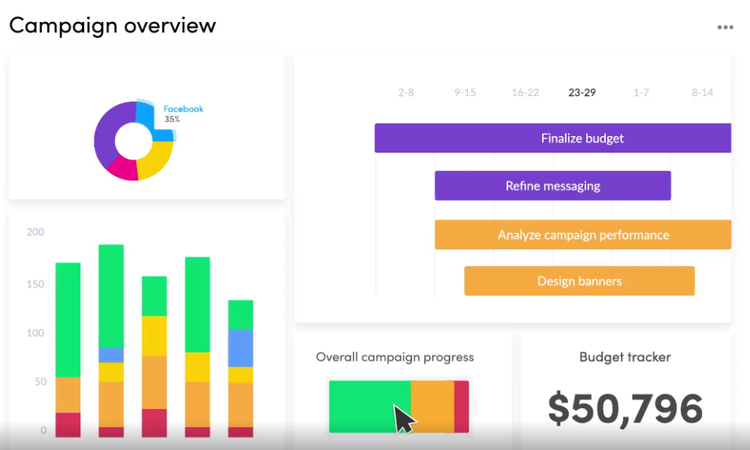
View project progress and KPIs on a single screen. Image source: Author
monday.com's built-in features outpace Trello's if you need -- and are willing to pay for -- its level of functionality.
Results
Hands down, monday.com wins, here. Trello does what it does well, but monday.com does even more equally well: different project organizational schemes, multiple team and personal boards, and advanced reporting.
Trello vs. monday.com: Support
Customer support is critical when you're using new project management software. Research all of the available options so you know what you can -- and can't! -- expect as well as what's free versus what you'll pay for.
What Trello offers
Trello's support is adequate at best. Users with the free plan are limited to online resources such as the knowledge base, which includes text-based and some video Trello tutorials, and user forums to find answers to questions or project management tips.
If you have a paid plan, you get "priority support," which means email help tickets receive a response within 24 hours.
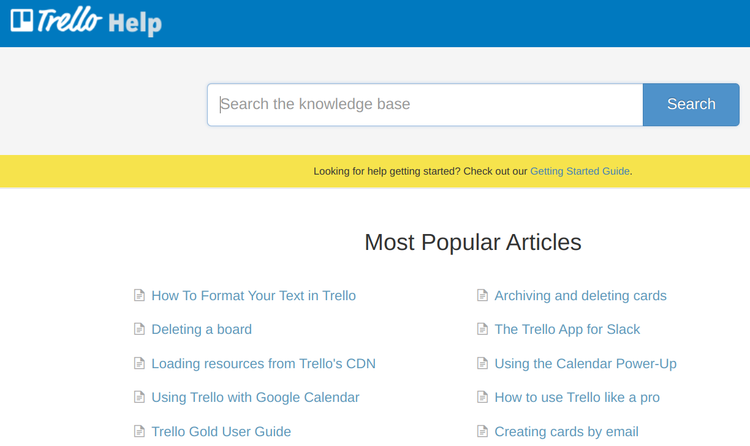
Trello's knowledge base is a key source of user information. Image source: Author
Trello's simplicity means you may not need much help, but even so, its help options are limited compared to those of its competitors.
What monday.com offers
monday.com has a knowledge base and community forum like Trello, but it also includes well-organized free video tutorials and webinars. There's no telephone support available, but you can submit help tickets via email. The enterprise plan comes with personalized onboarding.
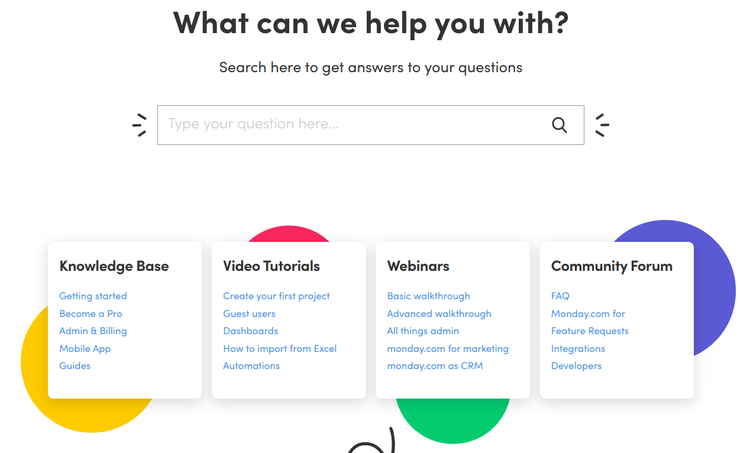
monday.com offers a wide range of online resources for its users. Image source: Author
monday.com also offers account setup, training, onboarding, and customized integrations through approved third-party providers via quote-based pricing.
Results
monday.com is the easy winner here. Trello supplies barebones support by any standard, and it falls well short of monday.com's free and paid resources.
Trello vs. monday.com: Ease of use
The best project management software is easy to learn and use. The interfaces of both Trello and monday.com are known for their high degree of usability.
What Trello offers
Trello's kanban board system is intuitive from the start. Trello walks you through the process to create your first board with easy-to-understand steps. All of your task columns are right in front of you, and navigating between them is a snap.
You can immediately create cards, task checklists, and labels as well as add users, attachments, and comments. Ready to move a card across the board? Drag it from one column and drop it into another.
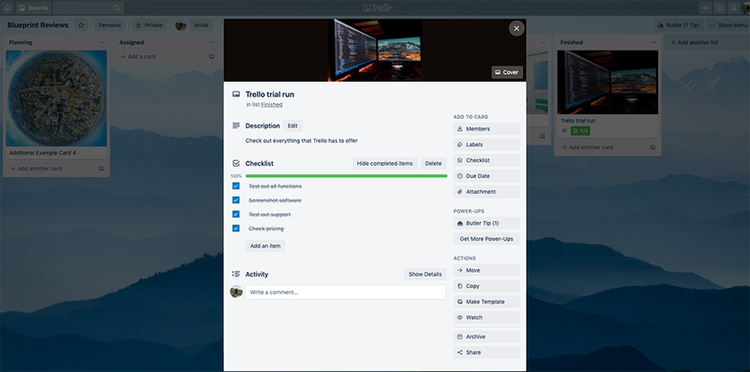
Trello project cards contain all of the information you need for each project. Image source: Author
The Trello user experience revolves around its boards and cards and not much else, which simplifies the project management process for everyone. The Ascent's review rated Trello's ease of use a perfect 10 due to this streamlined user experience.
What monday.com offers
monday.com's board system is comparable to Trello's and can be displayed in kanban style. Unlike Trello, you can switch the view to a Gantt-like chart that shows your team members and their current tasks as in the screenshot below.
You can also see the total workload for each team member, identify who is underloaded or overloaded, and recalibrate assigned tasks.
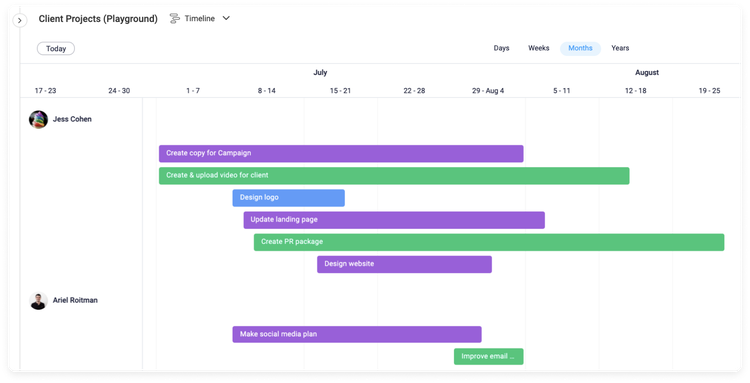
Project managers can track current tasks across multiple projects for team members. Image source: Author
Alt text: Team member workloads and tasks are displayed in a Gantt-like bar chart.
You can set up all of this without special plug-ins or integrations. The result is more time to work on your projects instead of managing monday.com.
If you need to monitor expenses, the Pro plan includes a formula column feature that makes calculations across different columns. Then, create your own separate budget boards to track project expenses.
Results
Trello is the winner here due to its overall simplicity. monday.com is not hard to use, but it has additional features that you'll need more time and practice to master.
Trello vs. monday.com: Pricing
Most project management software pricing is based on two factors: features and number of users. Determine your exact requirements in both areas to avoid paying for functionality or user licenses you don't need.
What Trello offers
Trello has three plans:
- Free -- Includes unlimited cards, lists, personal boards, 10 team boards, and a 10 megabyte per file attachment limit.
- Business Class ($12.50/month per user) -- Adds unlimited team boards, advanced checklists, power-ups, team board templates, priority support, and a 250 megabyte per file attachment limit.
- Enterprise ($20.83/month per user; the price per user progressively drops with more than 300 users) -- Adds power-up administration, attachment restrictions, organization-wide permissions, organization-visible boards, and public board management.
Trello's pricing is comparable to similar project management software, but one useful feature that comes with all plans, unlike at some of its competitors, is two-factor authentication for security.
What monday.com offers
While Trello offers a functional no-cost plan, you'll pay for all of monday.com's plans, each of which supports five users:
- Basic ($49/month) -- Includes unlimited boards, over 20 column types, iOS and Android apps, five gigabytes of storage, and a one-week activity log.
- Standard ($59/month) -- Adds four guest accounts, timeline and calendar views, advanced search, custom forms, integrations access, three dashboards, 50 gigabytes of storage, and an unlimited activity log.
- Pro ($99/month) -- Adds unlimited guest accounts, time tracking, formula columns, chart views, private boards, 10 dashboards, and unlimited file storage.
- Enterprise (quote-based) -- Adds audit logs, user session management, advanced account permissions, one-on-one training, a dedicated customer success manager, and 25 dashboards.
If you need to add more users to any plan, prices increase on a sliding scale from 10 users up to 200 or more.
Results
Trello comes out on top in this pricing comparison. Trello's low-end plans, including its free option, trump monday.com in providing the most value. If you require more users and features, though, the pricing for monday.com's upper tiers is a better deal.
Trello vs. monday.com: Integration with other software
No piece of software can do it all, so integrating your project management system with your existing software and applications is key.
Pay close attention to the costs: Some plans have limits on the number of plug-ins, power-ups, or integrations you can use unless you upgrade. Third-party add-ons may have a one-time cost or a monthly subscription.
What Trello offers
Trello has over 100 integrations organized into five categories:
- Add-ons: Create recurring cards across multiple boards, create and view burndown charts, or create a card from any webpage.
- Browser extensions: Generate Gantt charts, access your boards via a Chrome pop-up, or display lists in a grid.
- Connectors: Use Zapier, Unito, Zenaton, or other third-party vendors to connect Trello to almost any other software.
- Power-ups: Attach a Google Hangout or a Slack channel to a board, organize cards in a calendar view, or create a two-way or one-way Trello-Jira integration.
- Trello to go: Embed interactive Trello cards in Confluence or interactive boards in Bitbucket or Microsoft Teams.
Trello's baseline simplicity can be customized to meet your needs with some time and experimentation. Or, if your team has the coding skills, create your own power-ups.
What monday.com offers
monday.com has the same types of integrations as Trello but includes even more options:
- E-commerce: Track your Shopify or WooCommerce products, inventory, and orders.
- Marketing: Manage your Mailchimp email campaigns, or create, manage, and track your Facebook ads.
- Sales: Track and qualify your Salesforce leads, and manage your sales pipeline and funnels.
If monday.com doesn't offer the integration you need, Unito, Zapier, or a similar company can automate the connection to most other software and applications.
Results
The breadth of monday.com's integrations makes it the winner over Trello. Again, while Trello does some things well, monday.com does everything Trello can do -- and more.
How They Compare: Trello vs. monday.com
| Trello | monday.com | |
| Features |
|
|
| Customer support |
|
|
| Ease of use |
|
|
| Reporting and analytics |
|
|
| Pricing |
|
|
| Integrations |
|
monday.com earns the win
monday.com emerges victorious over Trello thanks to its advanced features, reporting and analytics, and customer support, all of which are critical to creating a successful project management plan.
Trello could still be your best choice if you're new to project management, have simpler workflows, or don't need all of the bells and whistles.

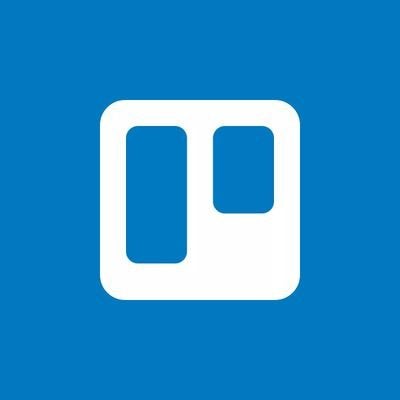
Our Small Business Expert
We're firm believers in the Golden Rule, which is why editorial opinions are ours alone and have not been previously reviewed, approved, or endorsed by included advertisers. The Ascent does not cover all offers on the market. Editorial content from The Ascent is separate from The Motley Fool editorial content and is created by a different analyst team.